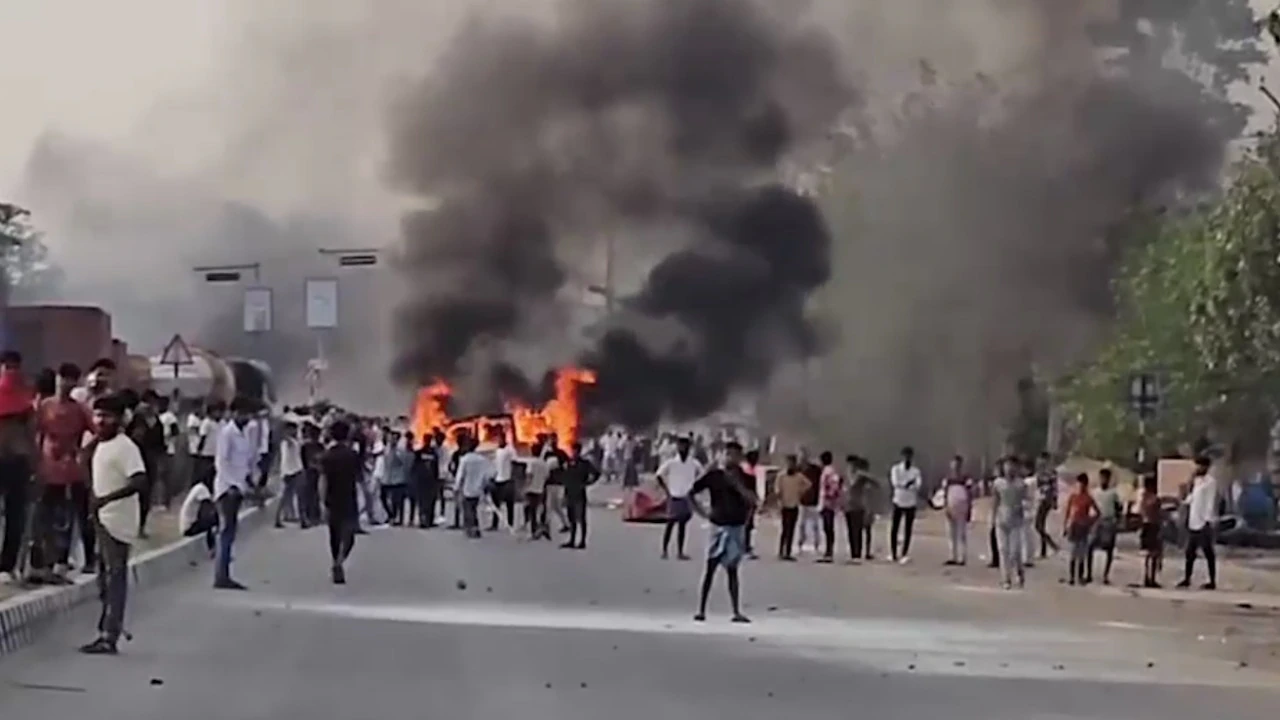Mamata Banerjee: In April 2025, Murshidabad, a district in West Bengal, became the epicenter of communal tensions following mass protests against the Waqf Amendment Act, 2025. These protests, largely led by members of the Muslim community, spiraled into violence that led to deaths, injuries, and the displacement of local residents—mostly Hindus.
Amidst this crisis, Chief Minister Mamata Banerje drew national attention by taking a bold and clear stance: she refused to implement the Act in West Bengal and strongly defended the rights of the Muslim community, earning both praise and criticism.
⚖️ The Political Context: What Was the Waqf Amendment Act?
The Waqf Amendment Act proposed stricter regulations and centralized control over Waqf properties—land and assets donated for religious or charitable use in Islam. Many Muslims believed this law violated their religious rights and signaled increased interference in religious matters by the central government.
Although it was passed at the national level, Mamata Banerjee made it clear that her state would not enforce the Act, saying:
“This law will not be applicable in our state. So why the riot?”
🛡️ Why Mamata Banerjee Took a Stand
Mamata Banerjee has long been seen as a protector of minority rights, particularly those of the Muslim community, which comprises over 27% of West Bengal’s population. Her response in the Murshidabad incident can be attributed to several reasons:
- Maintaining Secular Image:
As a leader of the Trinamool Congress (TMC), Mamata Banerjee has built her political brand on secularism and inclusivity. Defending Muslims during a sensitive period reinforced her commitment to those ideals. - Electoral Support Base:
The Muslim population forms a significant part of TMC’s voter base. Supporting them during the Murshidabad unrest may have been both a moral and strategic move. - Controlling Communal Fallout:
Banerjee condemned the violence but emphasized unity and peace, appealing to all communities not to fall into the trap of communal provocation by political opponents. - Countering the BJP Narrative:
The BJP accused Mamata of “minority appeasement” and claimed Hindus were being forced to flee Murshidabad. Banerjee dismissed this, saying: “Don’t fall for the riots orchestrated by outside forces for political gain.”
🚨 Murshidabad Aftermath
- Over 150 arrests were made.
- Internet services were suspended to control misinformation.
- Border Security Forces (BSF) were deployed following orders from the Calcutta High Court.
- Hundreds of Hindus reportedly displaced, many seeking refuge in neighboring districts.
Despite the tension, Mamata Banerjee remained firm on her stance, calling for dialogue over division.
📌 Conclusion
Mamata Banerjee’s defense of the Muslim community during the Murshidabad unrest was not just a political maneuver, but also a reflection of her broader commitment to secular governance. Her refusal to implement the Waqf Act in West Bengal highlights her ongoing efforts to balance law, order, and religious freedom—though not without controversy.
As Murshidabad continues to heal, the incident serves as a powerful reminder of the fragile fabric of communal harmony in India and the importance of leadership rooted in inclusivity and justice.
🏷️ SEO Tags
- Mamata Banerjee Murshidabad,
- Murshidabad Violence 2025,
- Waqf Amendment Act Protest,
- Why Mamata supports Muslims,
- Mamata Banerje Muslim vote,
- Murshidabad Hindu Muslim Clash,
- Bengal Communal Riots,
- Mamata Banerje Waqf Law,
- West Bengal News April 2025,
- Mamata Banerjee on Minority Rights,


 Watch
Watch
 CASUAL WEAR
CASUAL WEAR